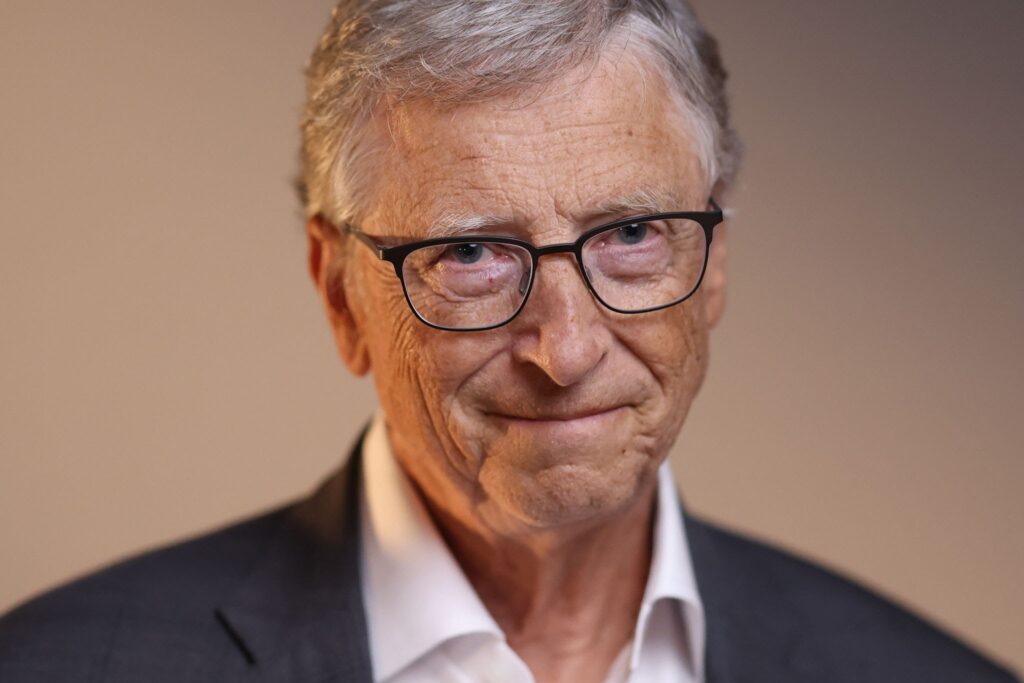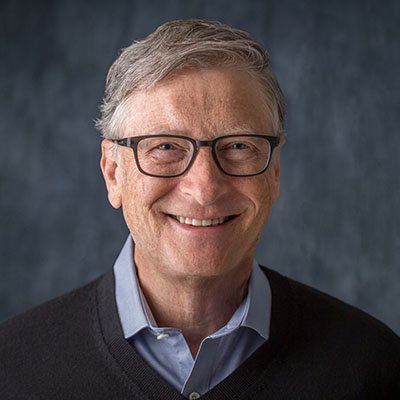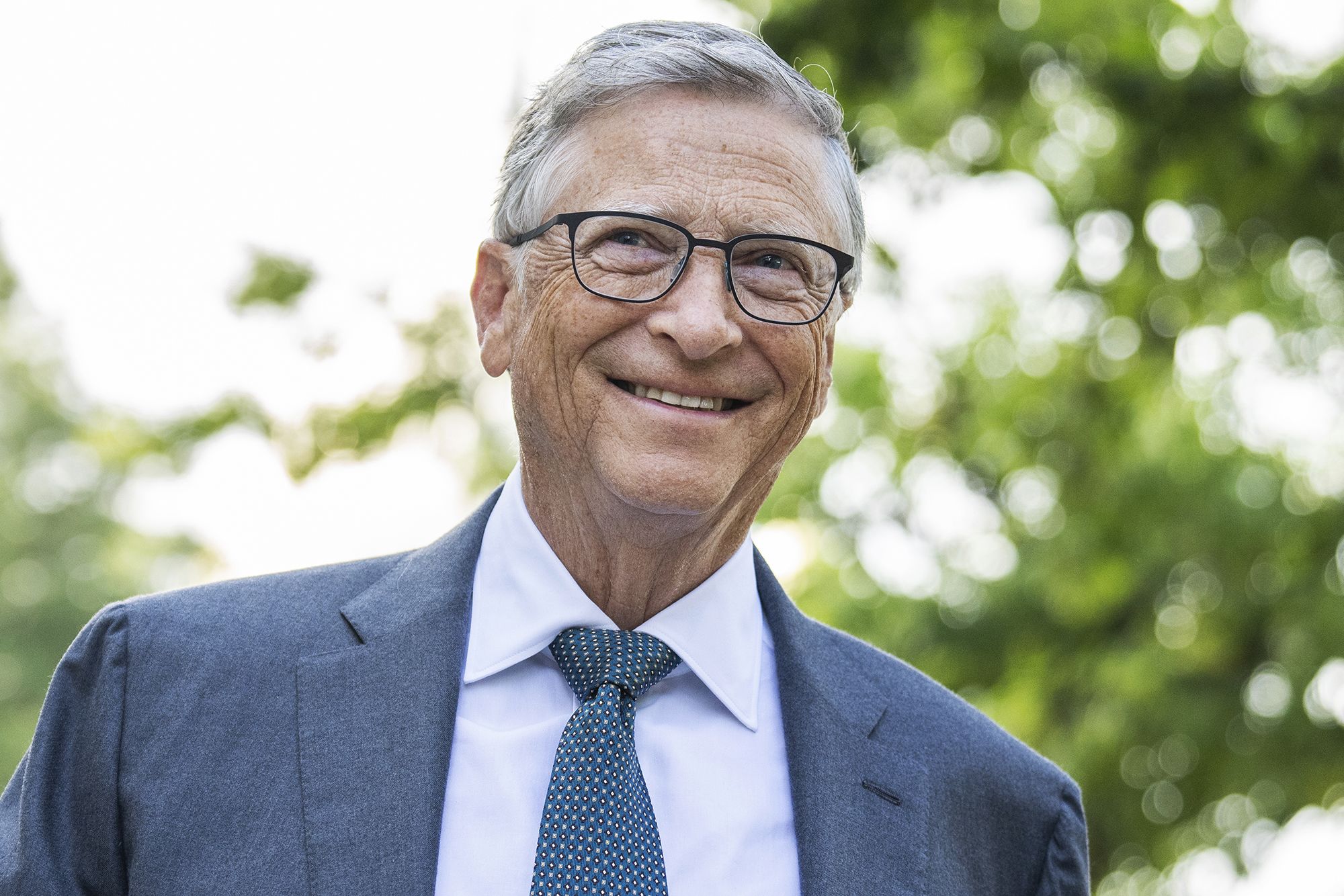
Bill Gates
Bill Gates: A Visionary in Technology and Philanthropy
Early Life
Birth and Family Background
William Henry Gates III, widely known as Bill Gates, was born on October 28, 1955, in Seattle, Washington. He is the second of three children in the Gates family. His father, William H. Gates Sr., was a prominent lawyer, and his mother, Mary Maxwell Gates, served on the board of directors for several organizations, including the United Way. Growing up in a supportive and intellectually stimulating environment, Bill was encouraged to pursue his interests and develop a strong work ethic.
Childhood and Early Interests
From a young age, Gates displayed an exceptional aptitude for mathematics and science. He attended Lakeside School, an exclusive private school in Seattle, where he first encountered computers. In 1968, the school acquired a computer terminal, and Gates quickly became fascinated with programming. He spent hours exploring the capabilities of the machine, teaching himself various programming languages and honing his skills.
Gates’s early exposure to computers sparked his passion for technology. He began developing his programming abilities and even created his first computer program at the age of 13—a tic-tac-toe game that allowed users to play against the computer. This experience solidified his interest in computing and laid the foundation for his future endeavors.
Education
Gates graduated from Lakeside School in 1973 and was accepted to Harvard University, where he initially pursued a degree in pre-law. However, his passion for computers and software development eventually led him to shift his focus. While at Harvard, he met Steve Ballmer, who would later become a key figure at Microsoft.
Gates’s time at Harvard was marked by both academic success and entrepreneurial pursuits. He spent considerable time working on computer programming projects and developed a version of the programming language BASIC for the Altair 8800, an early personal computer. This project would eventually lead him to drop out of Harvard in 1975, just two years into his studies, to pursue his vision of creating software for personal computers.
The Founding of Microsoft
Early Years
In 1975, after leaving Harvard, Gates partnered with his childhood friend Paul Allen to form a company called Micro-Soft (a combination of “microcomputer” and “software”). The duo initially focused on developing software for the Altair 8800 and quickly gained traction in the burgeoning computer industry. Their early success led to the decision to fully commit to their new venture.
In 1976, Gates and Allen officially registered Microsoft as a business, and the company began to grow rapidly. Gates’s keen business acumen and understanding of the market allowed Microsoft to seize opportunities as the personal computer industry exploded.
The MS-DOS Era
Microsoft’s breakthrough came in 1980 when IBM approached the company to develop an operating system for its first personal computer, the IBM PC. Gates and his team acquired an existing operating system called QDOS and adapted it for IBM’s needs, renaming it MS-DOS (Microsoft Disk Operating System). This partnership with IBM established Microsoft as a dominant player in the software industry.
MS-DOS became the standard operating system for IBM PCs, leading to widespread adoption of Microsoft software across the growing personal computer market. Gates’s foresight in recognizing the potential of the PC revolution positioned Microsoft for exponential growth in the following years.
Windows and Dominance in the Software Industry
In 1985, Microsoft launched Windows, a graphical extension of MS-DOS that provided users with a more intuitive interface. Initially met with skepticism, Windows gradually gained popularity as it offered a user-friendly experience compared to competing operating systems.
Under Gates’s leadership, Microsoft continued to innovate and release new versions of Windows, including Windows 3.0 in 1990, which achieved significant commercial success. The combination of Windows and MS-DOS solidified Microsoft’s dominance in the software industry and transformed the company into one of the most valuable tech firms in the world.
Initial Public Offering
In 1986, Microsoft went public, raising $61 million in its initial public offering (IPO). The company’s stock price skyrocketed, making Gates an instant millionaire at the age of 31. By the early 1990s, Microsoft had established itself as a household name, and Gates was recognized as one of the most influential figures in the tech industry.
Gates’s vision for Microsoft extended beyond software; he aimed to create a comprehensive ecosystem that would empower users with powerful tools for productivity and communication. The company continued to expand its product offerings, introducing software solutions for businesses and consumers alike.
Achievements and Milestones
Dominance in Personal Computing
Throughout the 1990s, Microsoft continued to dominate the personal computing market with the release of Windows 95, which introduced significant enhancements and user-friendly features. The launch was met with great fanfare, and the software quickly became a best-seller, solidifying Microsoft’s position as the leading software provider.
Under Gates’s leadership, Microsoft expanded into various markets, including office productivity software with Microsoft Office, which became the industry standard for word processing, spreadsheets, and presentations. The company also ventured into server software, web browsers, and gaming with the introduction of Xbox.
Gates’s Leadership Style
Gates’s leadership style has been characterized by his intense focus, competitive spirit, and commitment to innovation. He was known for being deeply involved in product development, often working closely with engineers and developers to ensure that Microsoft maintained its competitive edge.
Despite his demanding approach, Gates also fostered a culture of creativity and collaboration within the company. He encouraged employees to take risks and explore new ideas, leading to a continuous stream of innovative products and services.
Philanthropy and Transition
In 2000, Gates announced that he would gradually step back from day-to-day operations at Microsoft to focus on philanthropy. He transitioned to the role of chief software architect, allowing him to concentrate on the company’s strategic direction while beginning to dedicate more time to charitable initiatives.
The Bill & Melinda Gates Foundation, which Gates co-founded with his then-wife Melinda in 2000, became a primary focus for him. The foundation aimed to address pressing global issues, including education, global health, and poverty alleviation.
Philanthropy and Global Impact
The Bill & Melinda Gates Foundation
The Bill & Melinda Gates Foundation is one of the largest private philanthropic foundations in the world. With an endowment exceeding $50 billion, the foundation focuses on various global challenges, including healthcare, education, and economic development.
Global Health Initiatives
One of the foundation’s primary areas of focus is global health. Gates has been a vocal advocate for improving health outcomes in developing countries, particularly through initiatives aimed at combating infectious diseases such as malaria, tuberculosis, and HIV/AIDS. The foundation has invested heavily in research and development of vaccines and treatments to save lives and improve health systems.
Through partnerships with organizations like the World Health Organization and the Global Fund, the Gates Foundation has played a significant role in reducing child mortality rates and improving maternal health. The foundation’s efforts have contributed to significant progress in the fight against diseases that disproportionately affect low-income communities.
Education Initiatives
Gates’s commitment to education is another cornerstone of the foundation’s work. The foundation has invested in various educational initiatives aimed at improving access to quality education, particularly for underserved communities. This includes funding for schools, scholarships, and programs to enhance teacher training and curriculum development.
The foundation’s focus on education is rooted in the belief that access to quality education is essential for breaking the cycle of poverty and empowering individuals to achieve their potential. Gates has been particularly interested in promoting science, technology, engineering, and mathematics (STEM) education to prepare students for the demands of the modern workforce.
Climate Change and Sustainability
In recent years, the Gates Foundation has expanded its focus to address climate change and promote sustainable practices. Gates has advocated for the need for innovation in clean energy and technology to mitigate the effects of climate change. He launched the Breakthrough Energy Coalition in 2015, aimed at supporting innovations in sustainable energy and addressing global energy challenges.
The foundation’s work in climate change reflects Gates’s recognition of the interconnectedness of global issues and the importance of sustainable solutions for the future.
Recognition and Influence
Gates’s philanthropic efforts have garnered widespread recognition and accolades. He has been named to numerous lists of influential people, including Time magazine’s “100 Most Influential People” and Forbes’ “World’s Billionaires.” Gates’s impact on global health and education has made him a respected figure in the philanthropic community.
Gates has also received various awards for his contributions to society, including the Presidential Medal of Freedom and the Knight Commander of the Order of the British Empire. His commitment to addressing pressing global challenges has inspired many to follow in his footsteps and leverage their resources for social good.
Personal Life
Marriage and Family
In 1994, Bill Gates married Melinda French, a former Microsoft employee. The couple had three children together: Jennifer, Rory, and Phoebe. Gates often spoke about the importance of family and education in his life, and he aimed to instill the same values in his children.
Despite their successful partnership in philanthropy, Gates and Melinda announced their divorce in May 2021 after 27 years of marriage. The announcement shocked many, as the couple had been seen as a powerful force in philanthropy and social change. However, they pledged to continue their work at the foundation and maintain their commitment to addressing global issues.
Interests and Hobbies
Outside of his professional endeavors, Gates has various interests and hobbies. He is an avid reader and often shares book recommendations with his followers. His passion for reading has shaped his worldview and contributed to his lifelong learning philosophy.
Gates is also known for his love of technology and innovation. He frequently engages with emerging technologies, exploring how they can be harnessed to solve global challenges. He has expressed interest in artificial intelligence, biotechnology, and renewable energy as key areas for future development.
In addition to his intellectual pursuits, Gates enjoys playing tennis and bridge. He has participated in various charity events and matches, leveraging his passion for sports to raise funds for important causes.
Challenges and Controversies
Antitrust Lawsuit
Throughout his career, Gates and Microsoft faced significant challenges, particularly regarding antitrust issues. In the late 1990s, the U.S. Department of Justice filed a lawsuit against Microsoft, alleging that the company had engaged in anti-competitive practices to maintain its monopoly in the software market.
The legal battles that ensued garnered widespread media attention and raised questions about Gates’s business practices and the ethics of corporate competition. Ultimately, Microsoft reached a settlement with the government in 2001, agreeing to change certain business practices while denying any wrongdoing.
Despite the challenges, Gates emerged from the legal battles with his reputation largely intact, and Microsoft continued to thrive in the evolving tech landscape.
The COVID-19 Pandemic
In 2020, as the COVID-19 pandemic swept across the globe, Gates became a prominent voice advocating for a coordinated global response to the crisis. He emphasized the importance of vaccines, diagnostics, and equitable distribution of healthcare resources to combat the virus effectively.
The Gates Foundation committed significant resources to support vaccine development and distribution efforts, partnering with organizations like the Coalition for Epidemic Preparedness Innovations (CEPI) and GAVI, the Vaccine Alliance. Gates’s leadership during the pandemic further solidified his status as a key figure in global health initiatives.
The Future of Bill Gates
Ongoing Philanthropy
As Gates continues to focus on philanthropy, his vision for the future remains rooted in addressing global challenges. He has expressed a commitment to improving healthcare, education, and climate change initiatives, recognizing the interconnected nature of these issues.
The Gates Foundation is likely to continue its efforts to combat infectious diseases, improve educational access, and promote sustainable practices. Gates’s philanthropic legacy will shape the future of global health and development, inspiring others to engage in meaningful social change.
Technological Innovation
Gates’s interest in technology and innovation will continue to influence his work. As he explores emerging technologies and their potential to solve global challenges, he may focus on areas such as artificial intelligence, renewable energy, and biotechnology.
Gates’s commitment to innovation aligns with his belief that technology can be harnessed to improve lives and create a more equitable world. His insights and expertise will remain valuable as the tech landscape continues to evolve.
Advocacy and Global Leadership
In addition to his philanthropic efforts, Gates is likely to remain an influential advocate for global issues. His voice in public discourse on topics such as climate change, health equity, and education reform will continue to resonate with policymakers and the public.
As a respected figure in the philanthropic community, Gates may use his platform to inspire future generations of leaders to prioritize social impact and engage in initiatives that address pressing global challenges.
Conclusion
Bill Gates’s journey from a young computer enthusiast to a leading figure in technology and philanthropy is a remarkable story of vision, innovation, and social impact. His contributions to the software industry and commitment to addressing global challenges have shaped the landscape of technology and philanthropy.
Through the Bill & Melinda Gates Foundation, Gates has made significant strides in improving global health, education, and economic development. His legacy as a philanthropist and advocate for social change will continue to inspire individuals and organizations around the world.
As Gates navigates the complexities of philanthropy, technology, and global leadership, his influence will undoubtedly persist. His unwavering commitment to improving lives and addressing pressing issues reflects a belief in the power of innovation and collaboration to create a better future for all.
This biography provides a comprehensive overview of Bill Gates’s life and career. If you would like specific sections expanded or additional details included, please let me know!

